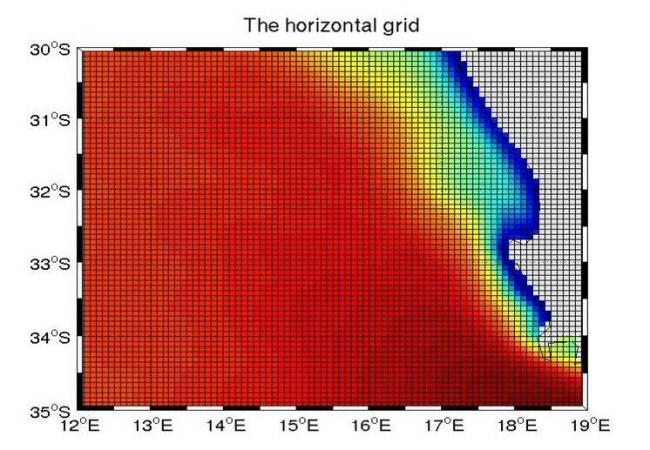ModelsOcean processes can be described using a set of equations that are based on principles of fluid dynamics as applied to a rotating sphere. Numerical ocean models approximate these processes by dividing the ocean into a number of horizontal and vertical cells, each of which use these equations to describe ocean mass and tracer exchanges between them. Thus, with appropriate atmospheric forcing, numerical models give us information on the evolution of the state of the ocean from time=1 to time=2.
While several different types of ocean models exist, they all use the same system of equations. Their differences are related to the way that their horizontal and vertical grids are divided up (or, discretized). Two models that are currently being used in South Africa, that have different vertical discretization schemes are the Regional Ocean Modelling System (ROMS) and the Hybrid Co-ordinate Model (HYCOM). There is also some expertise on the use of the Modular Ocean Model (MOM), which is designed for global ocean circulation studies. |




